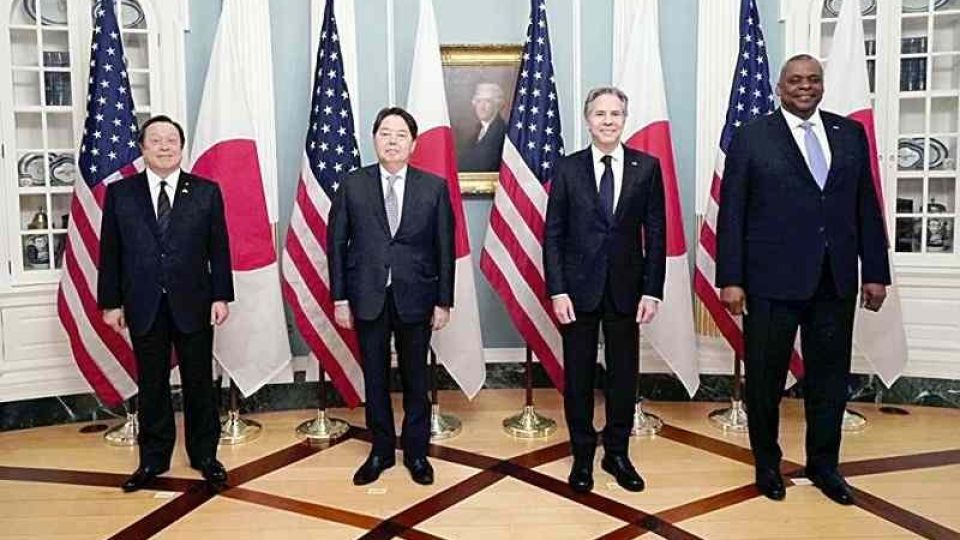January 13, 2023
WASHINGTON — The Japanese and U.S. governments clearly showed Wednesday a resolve to boost defense capabilities in the Nansei Islands, which span Kyushu and Okinawa Prefecture, amid lingering concerns that a contingency could occur regarding Taiwan.
At the 2-plus-2 defense talks of their foreign and defense chiefs, formally known as the Japan-U.S. Security Consultative Committee, the allies agreed to enhance “interoperable capabilities” to meet security challenges and bolster efforts to establish a system providing enhanced deterrence against China.
The Japan-U.S. alliance will enter a new phase as Foreign Minister Yoshimasa Hayashi, Defense Minister Yasukazu Hamada, U.S. Secretary of State Antony Blinken and Defense Secretary Lloyd Austin agreed to step up work on the division of roles between the U.S. military and the Self-Defense Forces, which will acquire counterattack capabilities.
At a joint press conference held after the meeting in Washington, Hamada welcomed the planned establishment of a U.S. marine littoral regiment in Okinawa Prefecture that can respond promptly to a contingency affecting Japan’s remote islands.
“And together with the fundamental reinforcement of defense capabilities of Japan, this will significantly elevate the deterrence and response capabilities of our alliance against armed attacks on Japan,” Hamada said.
A joint statement issued after the talks stated the ministers “affirmed the need to optimize alliance force posture” to address “increasing security challenges” in the region, including for the defense of the Nansei Islands. This was alluding to China, which has been ratcheting up its military pressure on Taiwan.
According to the U.S. government, the MLR on Okinawa Island likely will consist of between 1,800 and 2,000 personnel. Centered around littoral combat teams, the regiment will be equipped with anti-ship missiles, use equipment including amphibious ships and Osprey transport aircraft, and be able to move nimbly among remote islands. Deployed within range of enemy fire, the regiment’s objectives include deterring the movements of enemy ships.
The military balance between China and the United States in East Asia has gradually begun tilting in Beijing’s favor. In the event of a contingency, U.S. warships might struggle to approach the region because they would be at risk of attack by anti-ship missiles. Permanently stationing an MLR on Okinawa could therefore be a decisive factor in efforts to deter China.
The U.S. side has presented a plan to set up a small landing craft unit at Yokohama North Dock, a U.S. military facility in Yokohama. This unit would bolster the U.S. ability to transport personnel and supplies to the Nansei Islands.
The SDF plan to upgrade the Ground SDF’s 15th brigade stationed in Naha into a division. The SDF will work more closely with the U.S. military to improve their capability to nimbly transport personnel and equipment to the Nansei Islands.
At the 2-plus-2 meeting, the ministers confirmed the joint use of facilities at the U.S. military’s Kadena Ammunition Storage Area, in the village of Yomitan and elsewhere in Okinawa Prefecture, from fiscal 2025 to reinforce the SDF’s ability to continue operating in the Nansei Islands.
Regarding Japan’s decision to possess counterattack capabilities, the ministers agreed to deepen bilateral cooperation in areas such as targeting, which would involve the use of satellites and other equipment to pinpoint potential targets.
Austin strongly supported Japan’s acquisition of this capability.
“We affirmed that close coordination on employing this capability will strengthen the U.S.-Japan alliance,” the U.S. defense chief said at the joint press conference.

